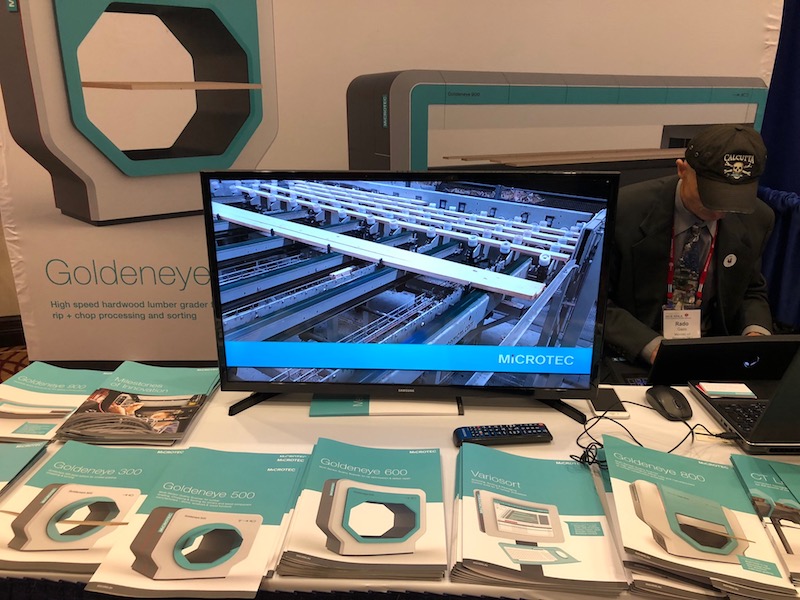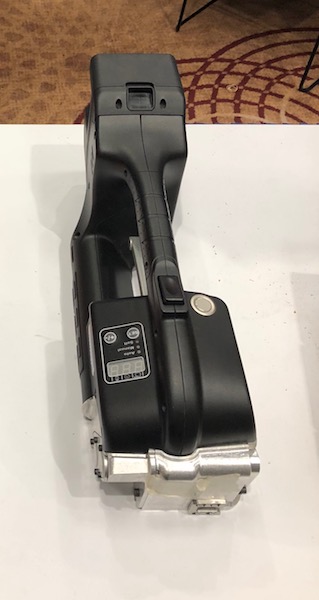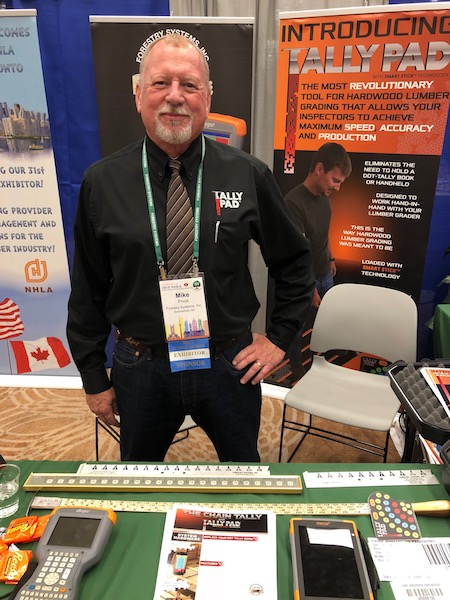
Features
Mills
Sawmilling
Who will ship and who will buy? Speakers tackle industry challenges at NHLA
Oct. 10, 2018 – From hardwood export market trends to understanding how to build their company’s legacy, attendees at the 2018 National Hardwood Lumber Association Annual Convention and Exhibit Showcase, held in Toronto from Oct. 2-5, heard a range of speakers share insights about industry trends and challenges. They also visited with around 100 exhibitors showcasing their newest products.
October 10, 2018 By Ellen Cools
Canadian Forest Industries magazine was there on Oct. 4 to share some key takeaways from the educational sessions.
Autonomous trucks and attracting drivers
Andy Moses, Penske Logistics’ vice-president of global products, began the day with his presentation, “Logistics & Transportation: Here and Now,” discussing the difficulties in trucking, how to overcome them, and technology trends.
As many industry professionals know, the main challenge facing transportation today is replacing professional drivers as they retire.
Attracting younger drivers is difficult not only because trucking isn’t seen as a skilled profession, but also because pay arrangements are performance oriented – paid per mile.
But considering North America’s aging infrastructure and population growth, “you just can’t get from point to point as fast as you used to,” Moses explained. Consequently, drivers are paid less.
And the hardwood industry faces another challenge: a lot of work is done with flatbed trailers, but drivers don’t enjoy topping and un-topping trailers.
Businesses should develop a strategy to make themselves more attractive to prospective drivers, such as integrating safety components in vehicles and utilizing new technology, Moses said.
In fact, some technology, such as autonomous vehicles, could resolve the driver shortage. But autonomous trucks are still decades away from being part of our day-to-day economy. Instead, Moses argues electric vehicles will soon be a part of fleet operations.
However, not all technology is beneficial. With the Electronic Logging Mandate in the U.S. companies have had to transition to electronic logging devices (ELDs) and master this new technology, which can be a burden and restricts them from operating beyond the hours of service limitations, Moses explained.
Consequently, some of the smaller carriers and owner-operators are leaving the market, while others are increasing their rates.
Additionally, rates have increased across the board for freight trucking.
According to Moses, there was an 11.1 per cent increase year over year in truck load rates in 2018. In flatbed trucks – a more fragmented market that has felt the impact of ELDs more – the increase was 13 or 14 per cent in 2018.
Looking to 2019, Penske Logistics predicts the contract truck load rates will increase eight per cent, while flatbed rates will increase 3.5 per cent.
Hardwood market trends and implications
But other trends in the industry are more positive, as Brooks Mendall, president and CEO of Forisk, pointed out in his presentation, “Forest industry investments and the market implications for hardwood logs.”
Over the past 30 years, the logging industry has become more efficient thanks to increased experience and improved equipment, Mendall said. In fact, the industry has been 1.2 – 1.5 per cent more productive each year.
Likewise, the industry has seen a lot of consolidation in the last 10 years. Data shows that of the five sectors of the industry (lumber, pulp, OSB, plywood and wood pellets) all except plywood have consolidated, so the top 10 firms account for more capacity than they did 10 years ago, said Mendall.
But ultimately, whether a company experiences growth or not is “a local thing,” he said.
“If there’s 10 sawmills in your local timber market, and one company owns all 10 mills, as a timber seller, you’re [in trouble],” Mendall explained. “But if you have 10 mills in your market and they’re owned by 10 different companies, that’s a diverse, deep market.”
However, companies should also consider three other factors: whether there are a significant number of buyers in their market, their supply profile, and technology.
It is also important to understand the impact of outside factors, such as immigration, which affects the cost and demand of products in the industry, Mendall said. Immigration slows the flow of labour, making it difficult for companies to get the labour they while simultaneously increasing cost, he elaborated.
Consequently, “it’s really important, when we think about this issue, [to determine] how we address this,” he said.
New products
CFI also spoke to different exhibitors and learned about some of the newest technologies and products on the market:
Microtec’s Goldeneye Plus, the first automated hardwood grader

Microtec’s Goldeneye Plus is the worldwide first solution for automated machine grading of hardwood lumber. The software reliably grades hardwood lumber based on internationally recognized NHLA grading standards and automatically manages the sorting process into NHLA grades. A Microtec Goldeneye scanner performs scanning and defect recognition. The Goldeneye Plus hardwood grader features a Goldeneye 600 scanner for lineal feeding or a Goldeneye 900 scanner for transverse feeding. Featuring an innovative low-power X-ray, line and dot lasers and in-house developed cameras and sensors, Goldeneye Plus is designed to scan hardwood lumber at speeds of up to 1,000 lineal feet per minute and up to 200 boards per minute in transverse feeding.
Maillis Strapping Systems introduces the MT 650

The MT 650 is a compact battery-powered strapping tool equipped with two Li-ion batteries and one battery charger. Manual, semi-automatic or automatic operation is available. Featuring an Ametek 36V brushless high torque motor for less wear and long life, the tool has smooth, easy to control take-up. Available in standard and (soft) low tension modes, the MT 650 has high impact reinforced casing with a metal nose for drop damage resistance. A reinforced circuit board located in front of the battery also provides improved protection. Suitable for 1-in. and 1.24-in. wide and 0.031-in. and 0.051-in. thick straps, it is 13.6 lb., including the battery.
Forestry Systems unveils CP3 Chain Tally and Tally Pad

The CP3 Chain Tally is specifically designed for chain operations where speed and efficiency result in increased profits and production. Two digit measurements are entered with one keystroke, allowing graders to tally with one-handed operation. The Chain Tally is the ideal tool for green chain production of vendor/mill loads. Bundles requiring surface measure, grade and piece counts are quickly tallied via the lumber enhanced keyboard. The Chain Tally system set up is as follows: add or choose a vendor, customer, inspector, species and many more commonly used details about a tally while working. Anyone can use a Tally Pad with the CP3 Chain Tally and interface into your current inventory system.
Print this page